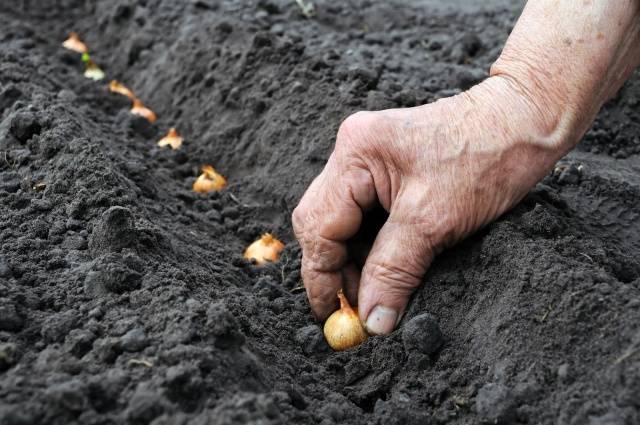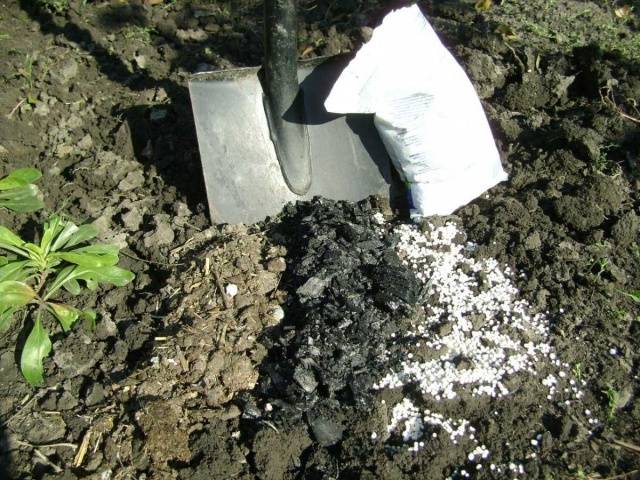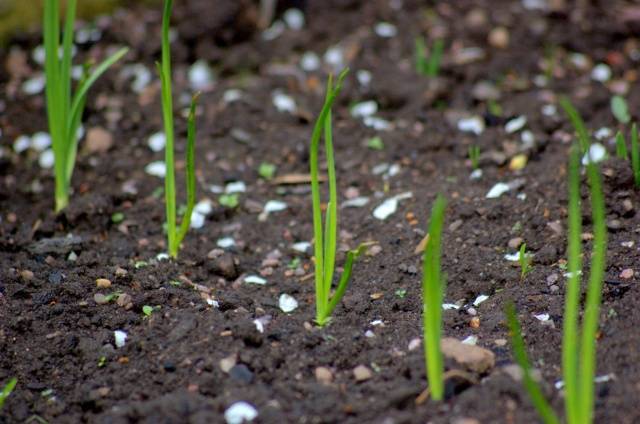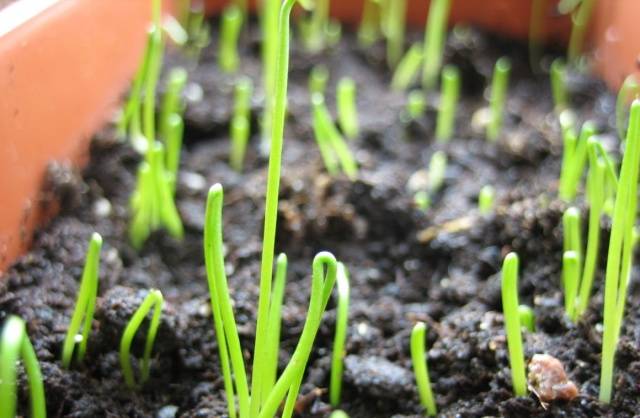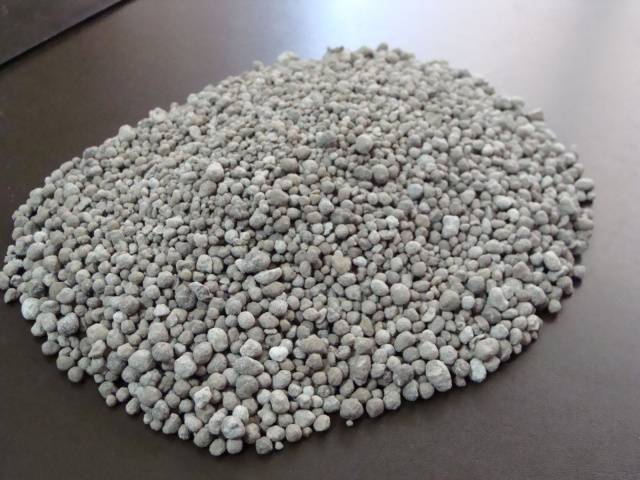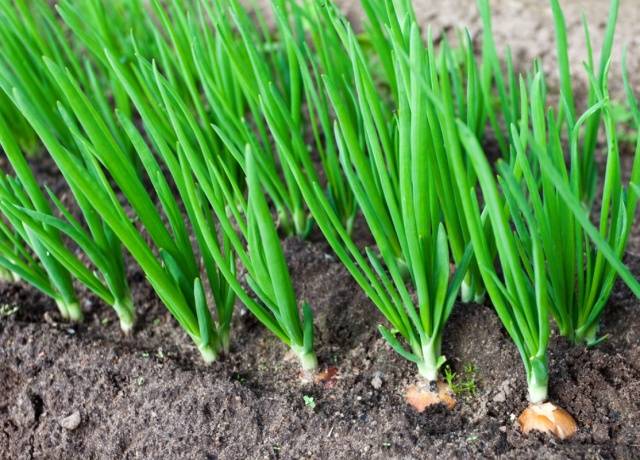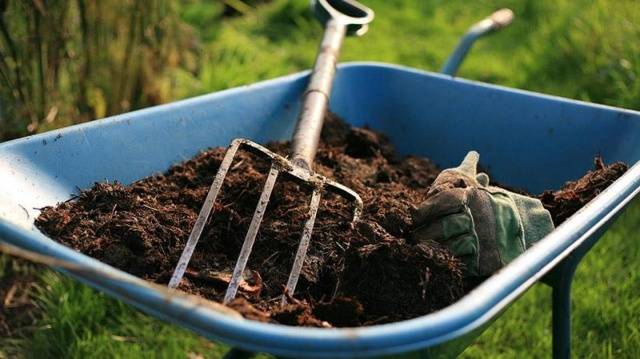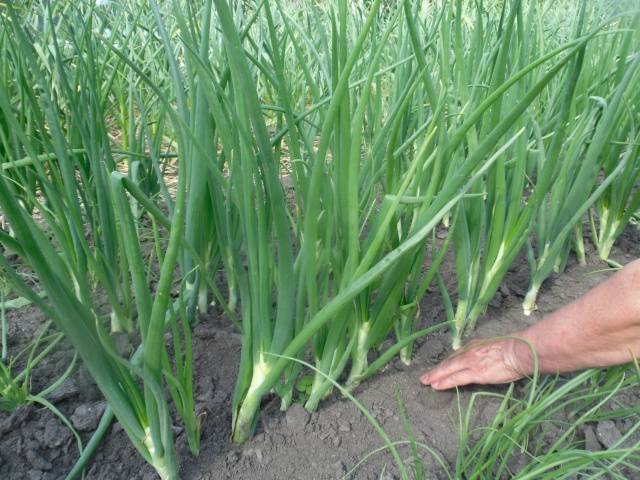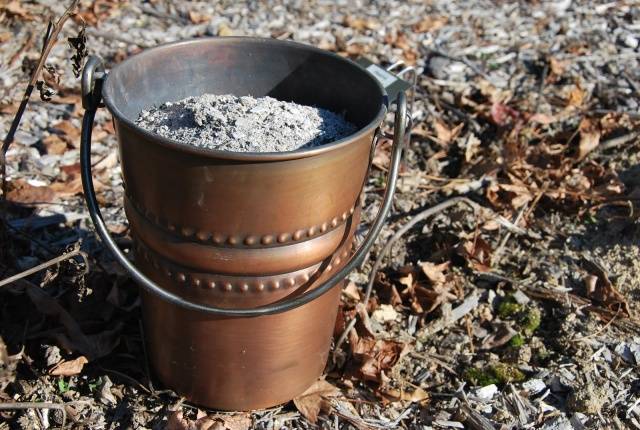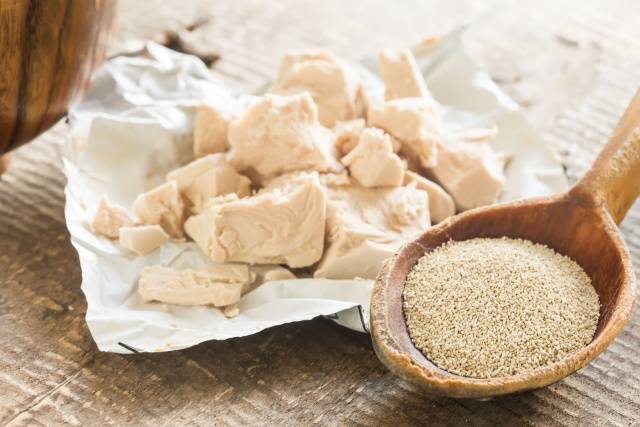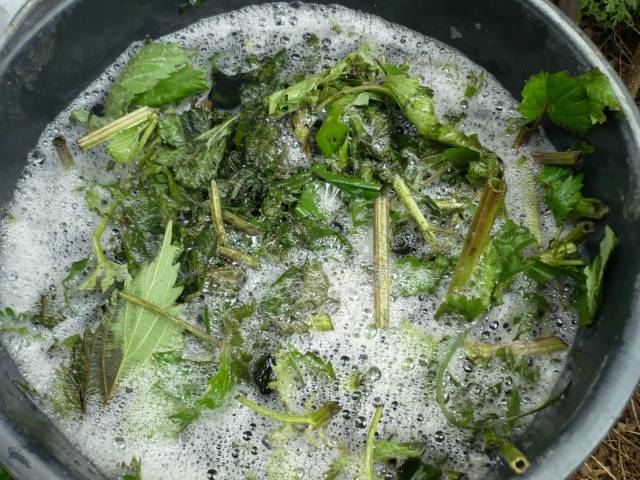Content
Onions are an unpretentious crop, however, nutrient intake is required for its development. Its feeding includes several stages, and for each of them certain substances are selected. Especially important feeding onions in spring, when the plant requires a maximum of useful components. The cultivation of the beds is carried out by watering. Mineral or organic substances are added to the solution.
Preparing the soil for onions
Before planting onions, you need to thoroughly prepare the soil. The culture prefers open spaces, well lit by the sun. The soil should remain breathable, moderate moisture.
Preparatory work begins in the fall. It is not recommended to choose areas that are flooded with water in spring. For onions, prolonged exposure to moisture is detrimental, as its heads begin to rot.
It is not recommended to plant onions several times in one place. At least three years should pass between plantings. Planting bulbs is allowed after potatoes, cabbage, tomatoes, legumes, cucumbers, pumpkins, peas.
Next to the onions, you can equip a garden with carrots. This plant does not tolerate onion flies, while the onion itself repels many other pests.
In winter, the soil is fertilized with peat or superphosphate. In early spring, you need to loosen the soil in order to maintain a high level of moisture in it.
As a top dressing for 1 sq. m of soil, organic fertilizers are applied:
- humus (compost) - 5 kg;
- ash - 1 kg.
In the fall, you can fertilize the soil with superphosphate (20 g) and potassium (10 g), and in the spring add superphosphate (up to 10 g) and ammonium nitrate (15 g) per 1 sq. M.
If the land was not fertilized in the fall, then in the spring, when planting, complex fertilizers are applied. Mineral components do not need to be embedded deeply in order for the bulbs to receive the necessary nutrition.
Timing of feeding onions
After preparing the soil, the onions are planted in the furrows using the belt method. Planting depth ranges from 1 cm to 1.5 cm.
You need to take care of onions throughout the spring. The number of dressings is two or three, depending on the state of the seedlings. For the procedure, choose cloudy weather when there is no wind. The optimal time for feeding is morning or evening.
If rainy weather is established, then minerals are buried in the ground to a depth of 10 cm between rows with plantings.
First feeding
The first treatment is carried out 14 days after planting the onions, when the first shoots appear. During this period, the plant needs nitrogen. This element is responsible for the growth of the bulbs, however, it should be introduced with caution.
Urea has the form of white granules, readily soluble in water. The resulting composition is applied to the soil around the rows with plantings. Due to nitrogen, greens are formed on the feather. With a lack of this element, the bow develops more slowly, the arrows become pale or acquire a yellow tint.
Ammonium nitrate is suitable for the first feeding. For 1 sq. m, up to 15 g of the substance is introduced. The main component of ammonium nitrate is nitrogen. The presence of sulfur in the fertilizer improves the ability of plants to absorb nitrogen.
An additional effect of ammonium nitrate is to strengthen the immune system of the onion.The substance is introduced into the soil before planting to eliminate pathogenic bacteria.
Another option for the first feeding includes:
- superphosphate - 40 g;
- saltpeter - 30 g;
- potassium chloride - 20 g;
- water - 10 liters.
Second feeding
At the second stage, feeding is performed in order to enlarge the bulbs. The procedure is carried out 14-20 days after the initial treatment.
A good effect is given by complex feeding, including:
- superphosphate - 60 g;
- sodium chloride - 30 g;
- saltpeter - 30 g.
All components are diluted in water and then used to fertilize the soil.
An alternative option is to use a complex fertilizer - nitrophoska. Its composition includes nitrogen, phosphorus and potassium. These substances are present here as salts, which are highly soluble in water.
Due to phosphorus and potassium, active growth of the bulbs is ensured. The components of nitrophoska are well absorbed by the plant and have a long-lasting effect. First, nitrogen is activated, and after a few weeks, the rest of the elements begin to act.
Thanks to phosphorus, onions accumulate vegetative mass. Potassium is responsible for the taste and density of the bulbs.
When working with mineral fertilizers, certain rules are observed:
- the dosage should correspond to the specified rate;
- for sandy soils, a lower concentration of components is required, but it is allowed to fertilize more often;
- before applying liquid fertilizer, you need to water the soil;
- it is possible to increase the content of nutrients only for clay soils;
- it is not allowed to get the composition on the feathers of the onion (if this happened, they are watered with a hose);
- the most effective are complex fertilizers containing phosphorus, potassium, nitrogen.
Third feeding
The third dressing of onions in the spring is performed two weeks after the second procedure. Its purpose is to provide the bulbs with nutrients for further growth.
The composition of the third treatment of planted onions includes:
- superphosphate - 60 g;
- potassium chloride - 30 g;
- water - 10 liters.
Organic fertilizer for onions
Mineral fertilizers are well combined with organic fertilizing. Rotten manure or chicken droppings are suitable for feeding the bulbs. Fresh manure is not applied under the onions.
For the first feeding, a glass of slurry is required in a bucket of water. The tool is used for watering, mainly in the evening.
The second top dressing is done from herbal infusion. It is made from comfrey or other herbs. Comfrey has a high potassium content, which is necessary for the formation of bulbs. The stems of the plant contain proteins.
To prepare the solution, 1 kg of fresh chopped grass is required, which is poured into a bucket of water. The infusion is prepared within a week.
For watering onions, 1 liter of comfrey infusion per 9 liters of water is required. Leftover grass is used as compost. The product is used only in spring, when it is required to saturate the bulbs with nitrogen. In the summer, such feeding is not carried out, otherwise the plant will direct all its forces to the formation of feathers.
Features of onion fertilization with chicken droppings stories in the video:
Top dressing of winter onions in spring
Winter onions are sown in the fall to get their first harvest in the spring. Planting is done a month before the first frost. To prepare the soil for winter cultivation, humus (6 kg) and superphosphate (50 g) are introduced into it for each square meter.
After the snow cover disappears, the covering material is removed from the beds and the soil is loosened.
Winter varieties prefer organic types of feeding - chicken manure or mullein, diluted with water. For the formation of green mass, nitrogen fertilizers are useful. Funds are applied to the soil during watering.
The second stage of feeding is performed when feathers appear, which occurs 2 weeks after the first procedure. Here you can use similar organic fertilizers or mineral complexes.
Folk remedies for onions
Onion care is carried out using folk remedies that are prepared at home. Such funds are inexpensive and completely safe for the environment, but at the same time they are highly effective.
Top dressing with ash
Ashes formed after burning wood or plants are suitable for fertilizing onions. If waste was burned, including construction waste, then such ash is not used for feeding.
Wood ash contains calcium, an important component that forms plant feathers and bulbs. Calcium activates metabolism and biochemical processes. Ash contains sodium, potassium and magnesium, which are responsible for the water balance and energy production of plants.
Ash components are capable of eliminating harmful bacteria that provoke diseases of the bulbs. Fertilizer is applied to the soil before watering or as an infusion.
A liter of water requires 3 tbsp. l. ash. The infusion is left for a week, after which it is poured into the furrows between the rows with plantings.
It is allowed to feed the onion with ash in spring no more than three times. Such nutrition is especially important at the stage of plant development, when the need for useful elements is high.
Ash is often added to compost or humus during fall soil preparation. For 1 sq. m of soil requires up to 0.2 kg of wood ash.
Yeast feeding
Feeding onions with yeast increases their immunity, enhances the growth of bulbs and feathers, and suppresses the development of fungal diseases.
Yeast promotes the functioning of bacteria that decompose the soil. So, the soil fertility and its saturation with nitrogen increase. Feeding on yeast alternates with mineral fertilizers, watering with chicken droppings and ash.
Spring feeding is formed from the following components:
- yeast - 10 g;
- sugar - 2 tbsp. l .;
- water - 10 liters.
All components are mixed, after which they are placed in heat for 2 days. The finished mixture is diluted with water in a ratio of 1: 5 and used for irrigation.
Yeast dressing is used in combination with herbal infusion. First, the chopped grass is poured with water, then after a week, 500 g of yeast is added. The infusion is left for 3 days, after which the finished product is obtained.
Conclusion
Top dressing onions begins at the stage of soil preparation for sowing. In the spring, the plant needs to provide the supply of nitrogen, calcium, phosphorus and other trace elements. For feeding, minerals are used, as well as organic fertilizers and folk remedies. It is allowed to use a complex top dressing, consisting of various types of fertilizers. All components are introduced into the soil according to the rate. An excess of substances negatively affects the development of plants.
